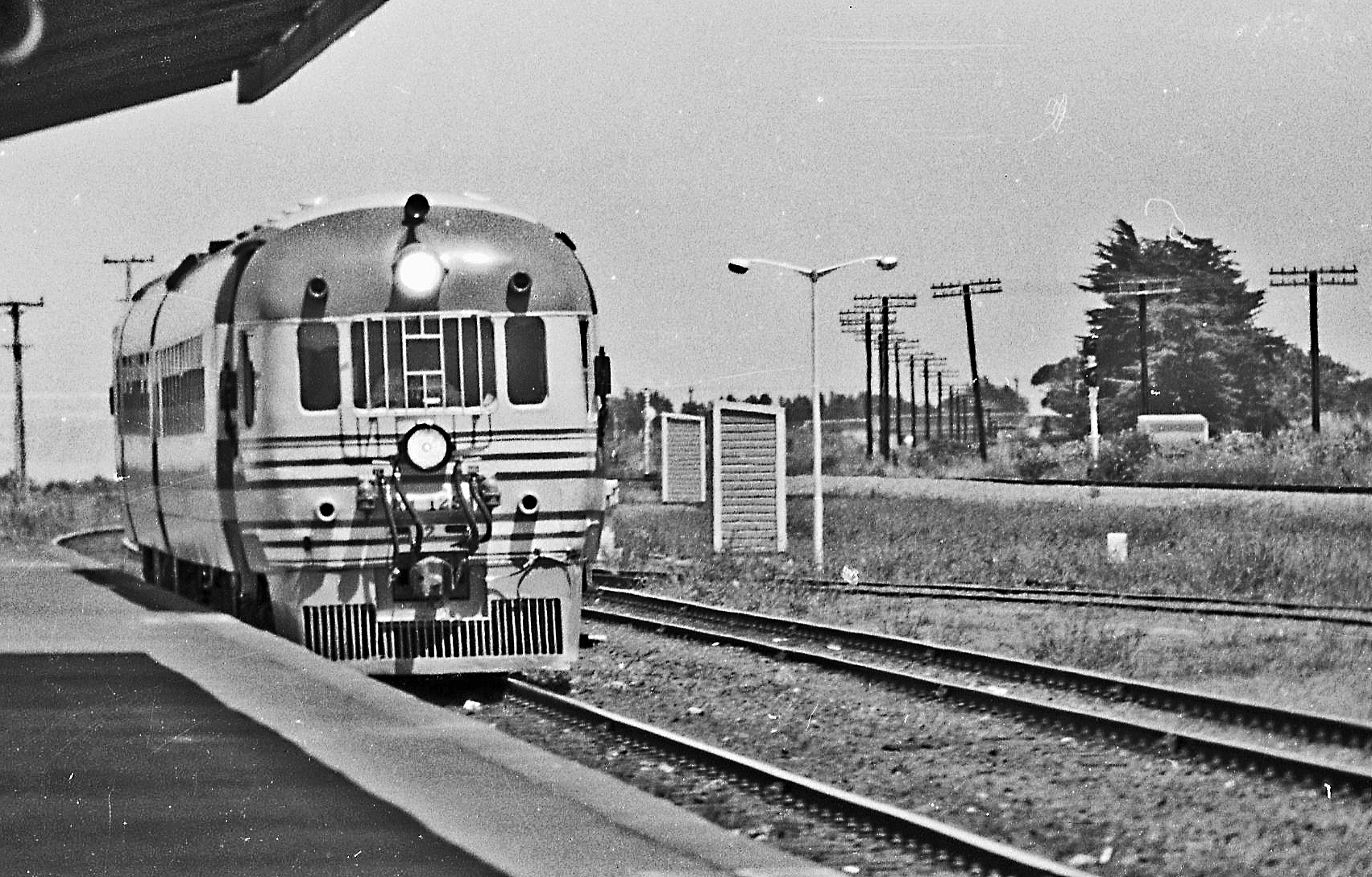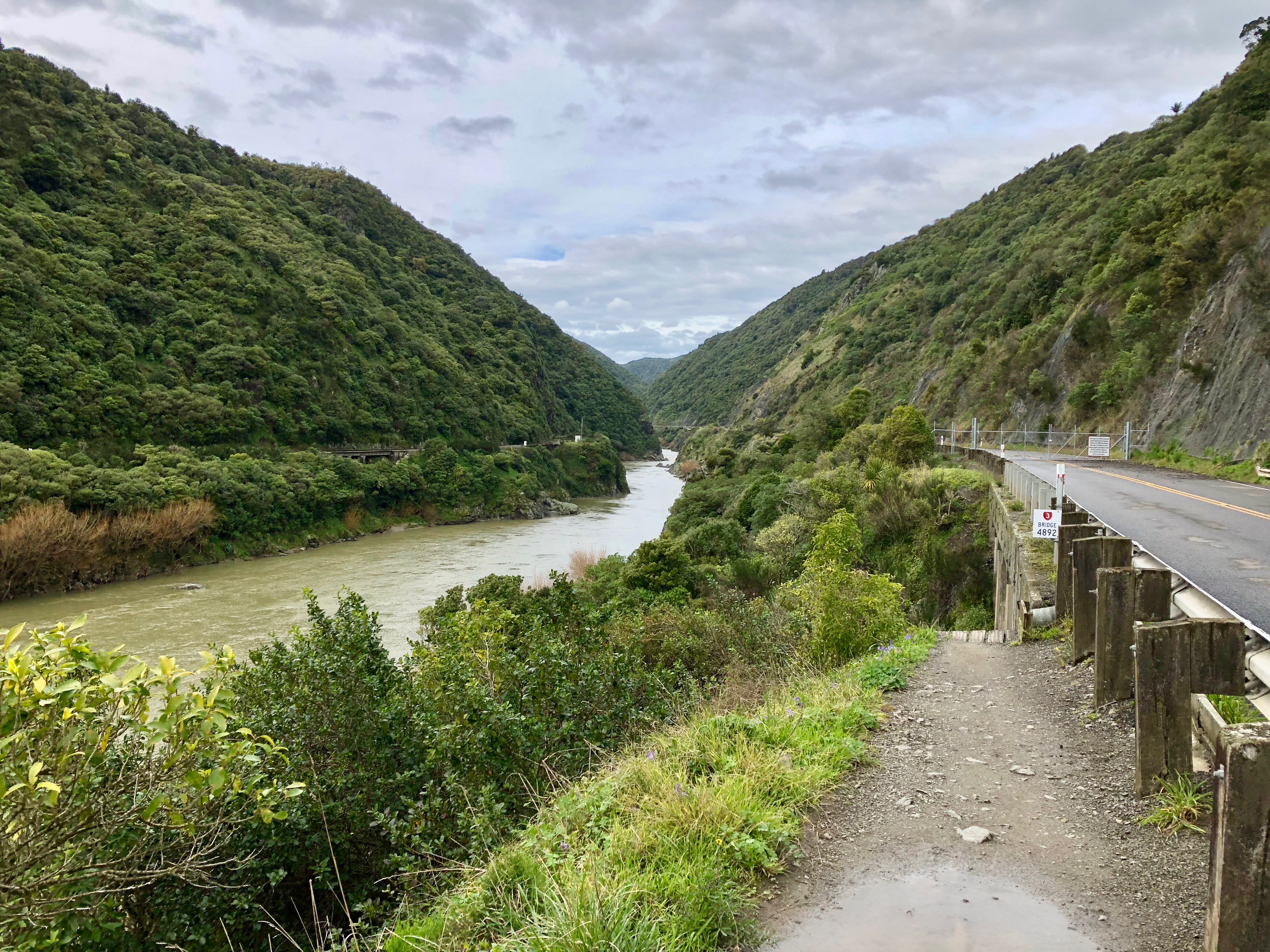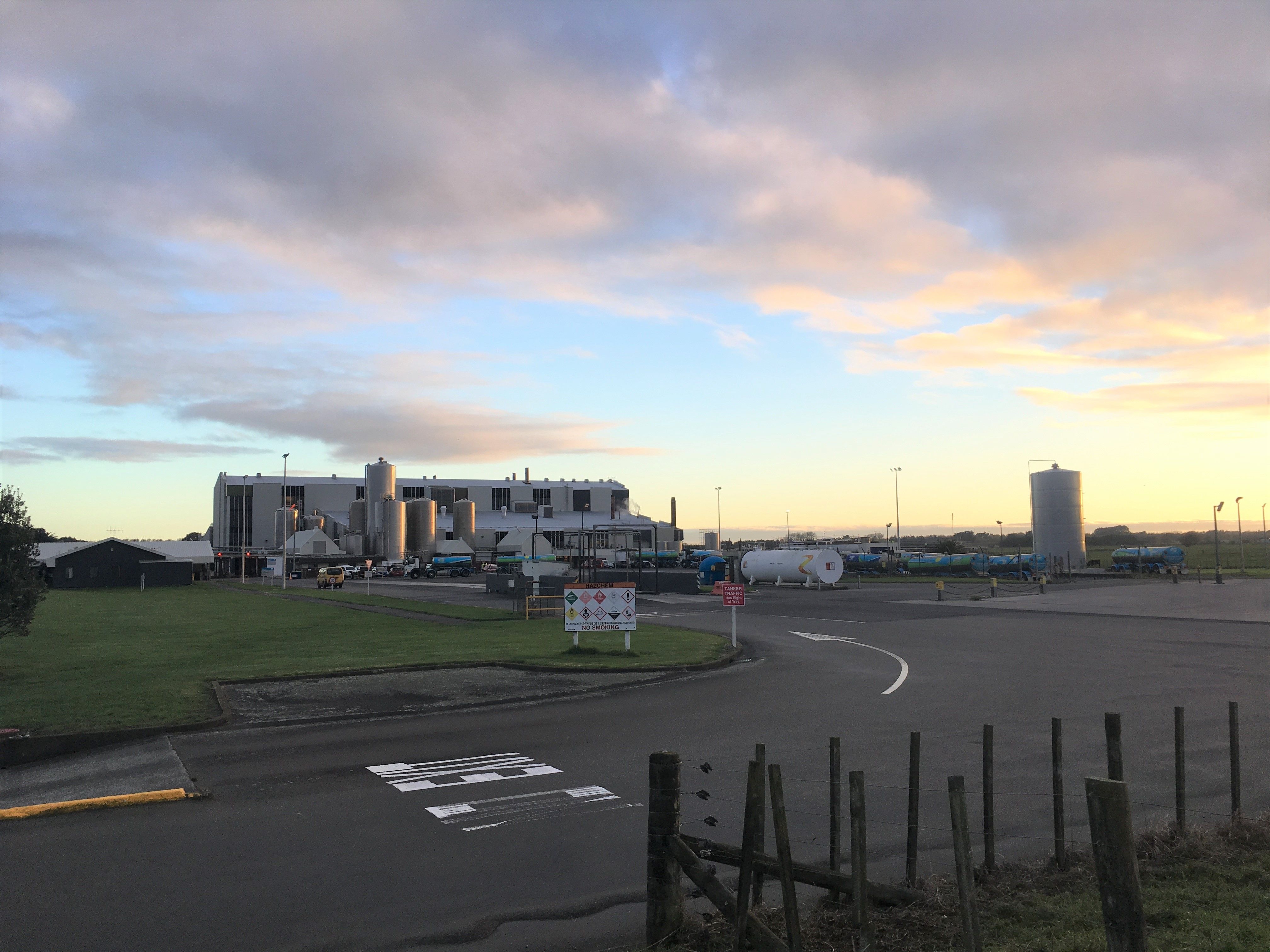|
Kopuaranga Railway Station
Kopuaranga railway station was a flag station that served the small rural settlement of Kōpuaranga, 12½ km north of Masterton, in the Wairarapa region of New Zealand’s North Island. It was located on the Wairarapa Line between the stations of Opaki (to the south) and Mauriceville (to the north). From its opening in 1886 it handled both passenger and freight traffic for years until closure in 1983. History Operations Early years: 1886–1897 When the station opened in mid-1886, Kōpuaranga was served by mixed trains that had already been providing services to stations further south on those sections of the line that were opened as the railway line made its way north. Mauriceville was briefly the railhead (for seven months) until Mangamahoe opened early the next year followed by Eketahuna two years later. Mixed trains continued to provide the only regular passenger services to Kōpuaranga until the completion of the line through to Woodville in 1897. Heyday: ... [...More Info...] [...Related Items...] OR: [Wikipedia] [Google] [Baidu] |
New Zealand Railways Department
The New Zealand Railways Department, NZR or NZGR (New Zealand Government Railways) and often known as the "Railways", was a government department charged with owning and maintaining New Zealand's railway infrastructure and operating the railway system. The Department was created in 1880 and was corporatised on 1 April 1982 into the New Zealand Railways Corporation. Originally, railway construction and operation took place under the auspices of the former provincial governments and some private railways, before all of the provincial operations came under the central Public Works Department. The role of operating the rail network was subsequently separated from that of the network's construction. From 1895 to 1993 there was a responsible Minister, the Minister of Railways. He was often also the Minister of Public Works. Apart from four brief experiments with independent boards, NZR remained under direct ministerial control for most of its history. History Originally, New Zea ... [...More Info...] [...Related Items...] OR: [Wikipedia] [Google] [Baidu] |
Wellington And Manawatu Railway Company
The Wellington and Manawatu Railway Company (WMR or W&MR) was a private railway company that built, owned and operated the Wellington-Manawatu railway line between Thorndon in Wellington, the capital of New Zealand, and Longburn, near Palmerston North in the Manawatu, between 1881 and 1908, when it was acquired by the New Zealand Government Railways. Its successful operation in private ownership was unusual for early railways in New Zealand. History At the time of the company's founding in 1881, the government had built the Foxton Branch railway linking Palmerston North and Foxton, and had completed surveys of lines down the west coast to Wellington. The government of Sir George Grey had approved the construction of the line, which was included in the Public Works Estimates of 27 August 1878. The final details of the survey were completed, and the first workers for the construction of the line were hired on 21 August 1879. A short section of the line, from Wellington to W ... [...More Info...] [...Related Items...] OR: [Wikipedia] [Google] [Baidu] |
Palmerston North–Gisborne Line
The Palmerston North–Gisborne Line (PNGL) is a secondary main line railway in the North Island of New Zealand. It branches from the North Island Main Trunk at Palmerston North and runs east through the Manawatū Gorge to Woodville, where it meets the Wairarapa Line, and then proceeds to Hastings and Napier in Hawke's Bay before following the coast north to Gisborne. Construction began in 1872, but the entire line was not completed until 1942. The line crosses the runway of Gisborne Airport, one of the world's only railways to do so since Pakistan's Khyber Pass Railway closed. In conjunction with the Moutohora Branch that ran north from Gisborne between 1900 and 1959, the line was originally intended to connect to the East Coast Main Trunk, described in 1875 as the North Island trunk line, but the difficult inland section between the Tāneatua Branch in the Bay of Plenty and the Moutohora Branch was never completed. The line has been freight only since October 2001, whe ... [...More Info...] [...Related Items...] OR: [Wikipedia] [Google] [Baidu] |
NZR RM Class (88 Seater)
The NZR RM class 88-seaters were a class of railcar used in New Zealand. New Zealand Government Railways (NZR) classified them as RM (Rail Motor), the notation used for all railcars, numbering the 35 sets from RM100 to RM134. They were the most numerous railcars in NZR service. Their purchase and introduction saw the demise of steam-hauled provincial passenger trains and mixed trains, and was part of a deliberate effort to modernise NZR passenger services at a time of increasing competition from private motor vehicles. Being diesel powered and lighter the railcars were less expensive to operate and able to maintain quicker timetables, although became plagued with mechanical and electrical problems, with a number of the class eventually being turned into depowered locomotive-hauled carriages and reclassified as the AC class "Grassgrubs". Background In the early 1950s, NZR was in the process of replacing steam traction with diesel and modernising the railways to cope with vastly i ... [...More Info...] [...Related Items...] OR: [Wikipedia] [Google] [Baidu] |
Railcar
A railcar (not to be confused with a railway car) is a self-propelled railway vehicle designed to transport passengers. The term "railcar" is usually used in reference to a train consisting of a single coach (carriage, car), with a driver's cab at one or both ends. Some railway companies, such as the Great Western, termed such vehicles "railmotors" (or "rail motors"). Self-propelled passenger vehicles also capable of hauling a train are, in technical rail usage, more usually called "rail motor coaches" or "motor cars" (not to be confused with the motor cars, otherwise known as automobiles, that operate on roads). The term is sometimes also used as an alternative name for the small types of multiple unit which consist of more than one coach. That is the general usage nowadays in Ireland when referring to any diesel multiple unit (DMU), or in some cases electric multiple unit (EMU). In North America the term "railcar" has a much broader sense and can be used (as an abbr ... [...More Info...] [...Related Items...] OR: [Wikipedia] [Google] [Baidu] |
NZR RM Class (Wairarapa)
The sole surviving Wairarapa railcar, RM 5 (''Mahuhu''), undergoing restoration at the Pahiatua Railcar Society The NZR RM class Wairarapa railcar was a class of railcars on New Zealand's national rail network. They entered service in 1936 (three weeks after the Midland railcars) and were classified RM like all other classes of railcars in New Zealand; they came to be known as the "Wairarapa" class as they were designed to operate over the famous Rimutaka Incline to the Wairarapa region on the Wairarapa Line. They also acquired the nickname of "tin hares" in New Zealand railfan jargon. The first two to be introduced re-used the numbers RM 4 and RM 5 that had previously been used by the withdrawn experimental Model T Ford railcars. The class consisted of six passenger railcars and one passenger-freight railcar. It is often described incorrectly as a class of six railcars. Background The Rimutaka Incline over the Rimutaka Ranges posed a severe time delay to any service ope ... [...More Info...] [...Related Items...] OR: [Wikipedia] [Google] [Baidu] |
Wairarapa Mail
The ''Wairarapa Mail'' was a passenger train operated by the New Zealand Railways Department (NZR) between Wellington and Woodville, continuing on to Palmerston North as a mixed train. It ran from 1909 until 1948 and its route included the famous and arduous Rimutaka Incline. Introduction From the 1897 completion of the Wairarapa Line until 1908, the route through the Wairarapa was NZR's primary means of accessing Wellington as the western line through the Kapiti Coast and Horowhenua was privately owned by the Wellington and Manawatu Railway Company. The ''Napier Express'' passenger train operated from Napier to Wellington via the Wairarapa, but on 7 December 1908, the Wellington and Manawatu Railway was purchased, and in early 1909, the ''Napier Express'' was diverted to the quicker western route. Accordingly, the ''Wairarapa Mail'' was introduced to provide Wairarapa residents with connections to Wellington, Manawatu, and the Hawkes Bay. Operation After the WMR was ... [...More Info...] [...Related Items...] OR: [Wikipedia] [Google] [Baidu] |
Manawatū Gorge
The Manawatū Gorge () is a steep-sided gorge formed by the Manawatū River in the North Island of New Zealand. At long, the Manawatū Gorge divides the Ruahine Ranges, Ruahine and Tararua Ranges, linking the Manawatū-Whanganui, Manawatū and Tararua District, Tararua Districts. It lies to the northeast of Palmerston North. Its western end is near the small town of Ashhurst and its eastern end is close to the town of Woodville, New Zealand, Woodville. As the one of the few links between the eastern and western North Island, the gorge is an important transport link, with the Palmerston North–Gisborne Line passing through the gorge, as well as New Zealand State Highway 3, State Highway 3; the road has been closed since 2017. Recreationally, the gorge is part of the Manawatū Gorge Scenic Reserve, with various walking tracks through the surrounding native bush. Like many important geographic features in New Zealand, the creation and exploration of Manawatū Gorge is an embedded pa ... [...More Info...] [...Related Items...] OR: [Wikipedia] [Google] [Baidu] |
North Island Main Trunk
The North Island Main Trunk (NIMT) is the main railway line in the North Island of New Zealand, connecting the capital city Wellington with the country's largest city, Auckland. The line is long, built to the New Zealand rail gauge of and serves the large cities of Palmerston North and Hamilton. Most of the NIMT is single track with frequent passing loops, but has double track - * between Wellington and Waikanae, except for of single-track through tunnels between North Junction ( from Wellington) and South Junction, ( from Wellington), on the Pukerua Bay to Paekakariki section, * between Hamilton and Te Kauwhata (except for the single-track Waikato River Bridge at Ngāruawāhia), and * between Meremere and Auckland Britomart. Around (approximately 65%) of the line is electrified in three separate sections: one section at 1600 V DC between Wellington and Waikanae, and two sections at 25 kV AC: between Palmerston North and Te Rapa (Hamilton) and between Papakura and ... [...More Info...] [...Related Items...] OR: [Wikipedia] [Google] [Baidu] |
Rimutaka Incline
The Rimutaka Incline was a , gauge railway line on an average grade of 1-in-15 using the Fell system between Summit and Cross Creek stations on the Wairarapa side of the original Wairarapa Line in the Wairarapa district of New Zealand. The term "Rimutaka Incline" is sometimes used incorrectly to refer to other parts or all of the closed and deviated section of the Wairarapa Line between Upper Hutt and Speedy's Crossing, near Featherston. The incline formation is now part of the Remutaka Rail Trail. History Background The construction of a railway from Wellington to Masterton was authorised in the Railways Act passed on 13 September 1871. Julius Vogel, Colonial Treasurer, travelled to England to raise finance for a major public works programme for railway construction. Vogel returned via the United States, where he studied rail systems. After the act of parliament was passed, a survey party set out to make preliminary investigations of possible routes for a railway o ... [...More Info...] [...Related Items...] OR: [Wikipedia] [Google] [Baidu] |
Longburn
Longburn (or Karere) is a rural settlement just outside Palmerston North in the Manawatū-Whanganui area of New Zealand. Made up of large dairy processing plants Longburn is often mistaken to be a small township and not seen as a large satellite town of Palmerston North. The township is home to both Longburn School and Longburn Adventist College. The population was 354 in 2018. History Some of the region's earliest settlers settled in the Longburn area, including former Prime Minister of Denmark Bishop Ditlev Monrad and his family. Dairy A butter factory was opened in 1884, butter and cheese were exported in kegs to Britain. An entirely new plant was opened at Longburn in 1966. Today Fonterra's Longburn milk processing plant in conjunction with its sister plant in Pahiatua collects milk daily from Lake Tutira in northern Hawke's Bay down to Whitemans Valley near Wellington. [...More Info...] [...Related Items...] OR: [Wikipedia] [Google] [Baidu] |
Palmerston North
Palmerston North (; mi, Te Papa-i-Oea, known colloquially as Palmy) is a city in the North Island of New Zealand and the seat of the Manawatū-Whanganui region. Located in the eastern Manawatu Plains, the city is near the north bank of the Manawatu River, from the river's mouth, and from the end of the Manawatu Gorge, about north of the capital, Wellington. Palmerston North is the country's eighth-largest urban area, with an urban population of The official limits of the city take in rural areas to the south, north-east, north-west and west of the main urban area, extending to the Tararua Ranges; including the town of Ashhurst at the mouth of the Manawatu Gorge, the villages of Bunnythorpe and Longburn in the north and west respectively. The city covers a land area of . The city's location was once little more than a clearing in a forest and occupied by small communities of Māori, who called it ''Papa-i-Oea'', believed to mean "How beautiful it is". In the mid-1 ... [...More Info...] [...Related Items...] OR: [Wikipedia] [Google] [Baidu] |

.jpg)


.jpg)




.jpg)